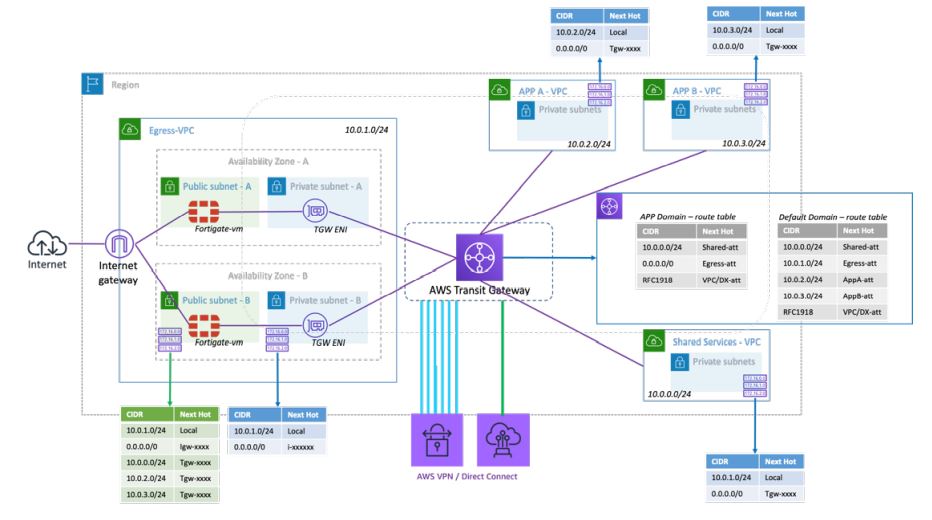Network and security. AWS Best Practices and Services
AWS enhances security with the Transit Gateway service, which allows you to route all traffic to and from any VPC or VPN and manage everything from one place.
AWS Transit Gateway connects to VPC networks through a central hub, and allows you to connect, thanks to VPNs, even to local networks (on-premises), simplifying the network and putting a stop to complex peering relationships.
The real advantage of Transit Gateway is that it can be used to connect multiple VPNs with always only one component on the Cloud side.
AWS Transit Gateway acts as a cloud router and can be used to interconnect your VPCs and on-premises networks. It is a cross-account, per-Region service, but can be easily extended to multiple Regions by peering to multiple AWS Transit Gateway instances in different Regions.
Transit Gateway is obviously connected to the AWS global network, which is why your data is automatically encrypted and will never transit over the public internet. In addition, AWS Transit Gateway Network Manager is centrally located and can view your entire network in a unique way, even when connected to software-defined wide area network (SD-WAN) devices.
What are the benefits of Transit Gateway?
- Simplified connectivity
AWS Transit Gateway acts as a cloud router to simplify network architecture.
Even with the growth of the network and the complexity of managing incremental connections, the business is not affected in any way.
AWS Transit Gateway can also be used to build global applications, using cross-Region peering.
- Better visibility and control
With AWS Transit Gateway Network Manager, you can easily monitor your Amazon VPC and edge connections from a central console. Integrated into popular SD-WAN devices, AWS Transit Gateway Network Manager also allows you to quickly identify issues and react to events across global networks.
- Optimize security
Traffic between AWS Transit Gateway and Amazon VPC remains on the AWS Global Private Network and is not exposed to the public internet.
AWS Transit Gateway’s cross-Region peering encrypts all traffic without any vulnerabilities or bandwidth bottlenecks. This provides enhanced security and protects against DDoS attacks and other common exploits.
In addition, Transit Gateway allows you to centralize routing ( Ingress and Egress traffic) so you can add components that allow you to inspect all traffic entering and leaving the cloud network, increasing control of network security.

- Flexible multicast
AWS Transit Gateway’s multicast support delivers the same content to multiple specific destinations. Expensive local multicast networks are no longer required, and it reduces the bandwidth required for broadcast-intensive applications, such as video conferencing, media, or teleconferencing.
Some use cases
Delivering applications worldwide
AWS Transit Gateway allows you to build applications that span thousands of Amazon VPCs. That means deploying new applications without having to make massive updates to route tables to create peering relationships. Simplified deployment, management, and troubleshooting.
Global reach
With cross-Region peering relationships, everything connected to AWS Transit Gateway is shared across AWS Regions. This includes VPC, DNS, Microsoft Active Directory, and IPS/IDS.
Optimal response to peak demand
With AWS Transit Gateway, you can quickly add Amazon VPC, AWS accounts, VPN capacity, or AWS Direct Connect Gateway to answer unexpected questions, without having to spend time with massive route tables or complex connections.
Provide a host for multicast applications in the cloud
With AWS Transit Gateway’s multicast capability, you can provide a host for multicast applications without having to redesign your application or make any changes to your on-premises network. Multicast applications scale based on demand, without having to purchase and maintain custom hardware to support application load spikes.
